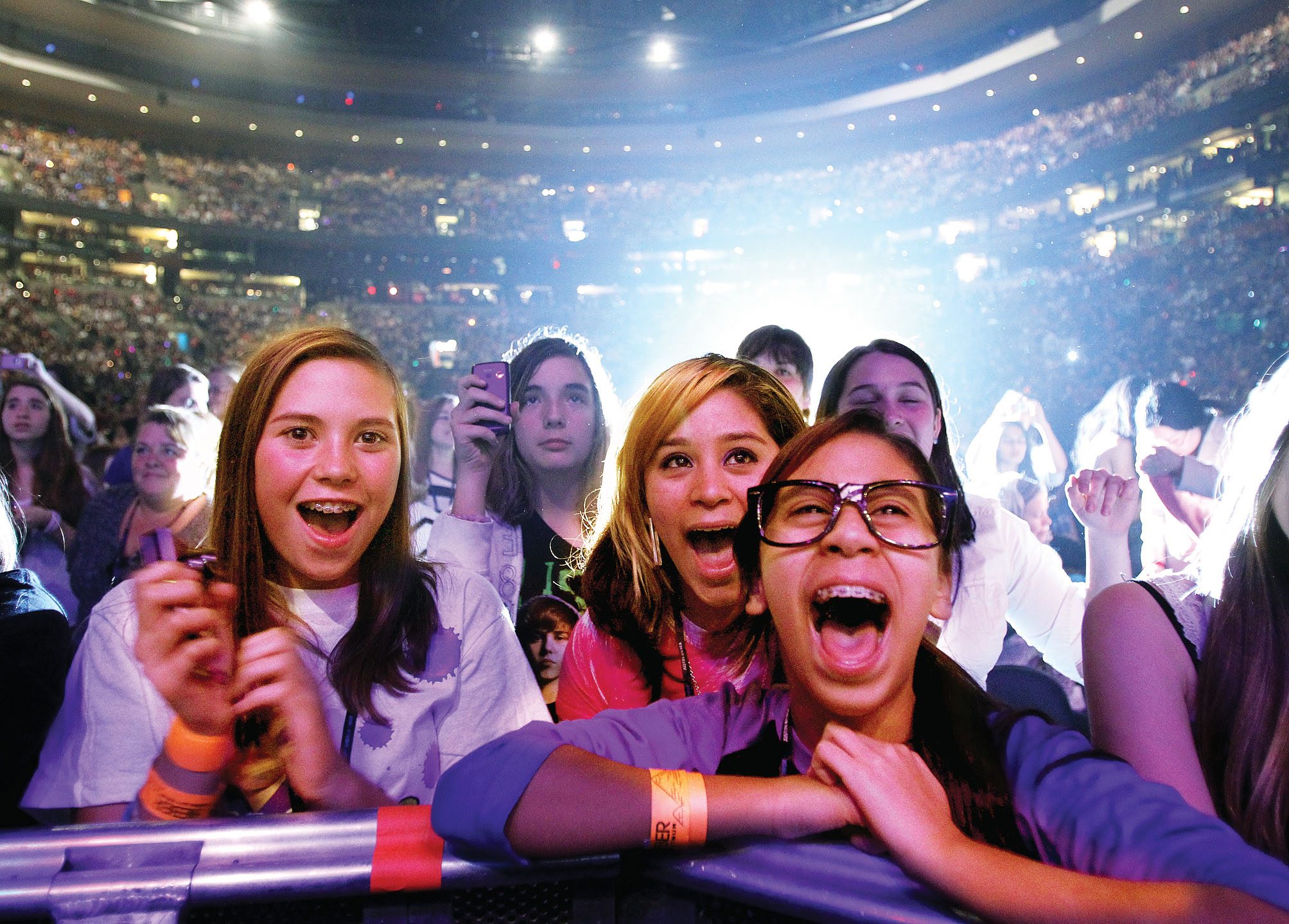Table of Contents Show
Teenage girls have been subject to some of the worst hostility and mockery of any gender and age group in history. Sure, millennials got their day in court, and boomers have recently gotten a taste of societal reprimanding. Still, no age group has been as historically and consistently caricatured and denigrated as teen girls. Teen girls are seen as naïve airheads while being sexualized to oblivion; they are stereotyped as overspenders despite teenagers comprising over a quarter of the workforce (even during a pandemic). It’s about time society shows them the respect they deserve before it loses them and, in turn, loses everything that comes with them.
The Early Days
The word “teenager” wasn’t even used prior to the 1920s. Teen girls didn’t exist because there wasn’t a word for them. They were either adults or children. The invention of cars helped the separation of children from teenagers since these teens used cars to get away from adult supervision when dating — or any opposite-sex interaction — was under a lot of scrutiny. They’d have to have their first date at home and were allowed one unsupervised walk through town. However, with cars, teens could go wherever they wanted, do whatever they wanted, and deal with the repercussions later.
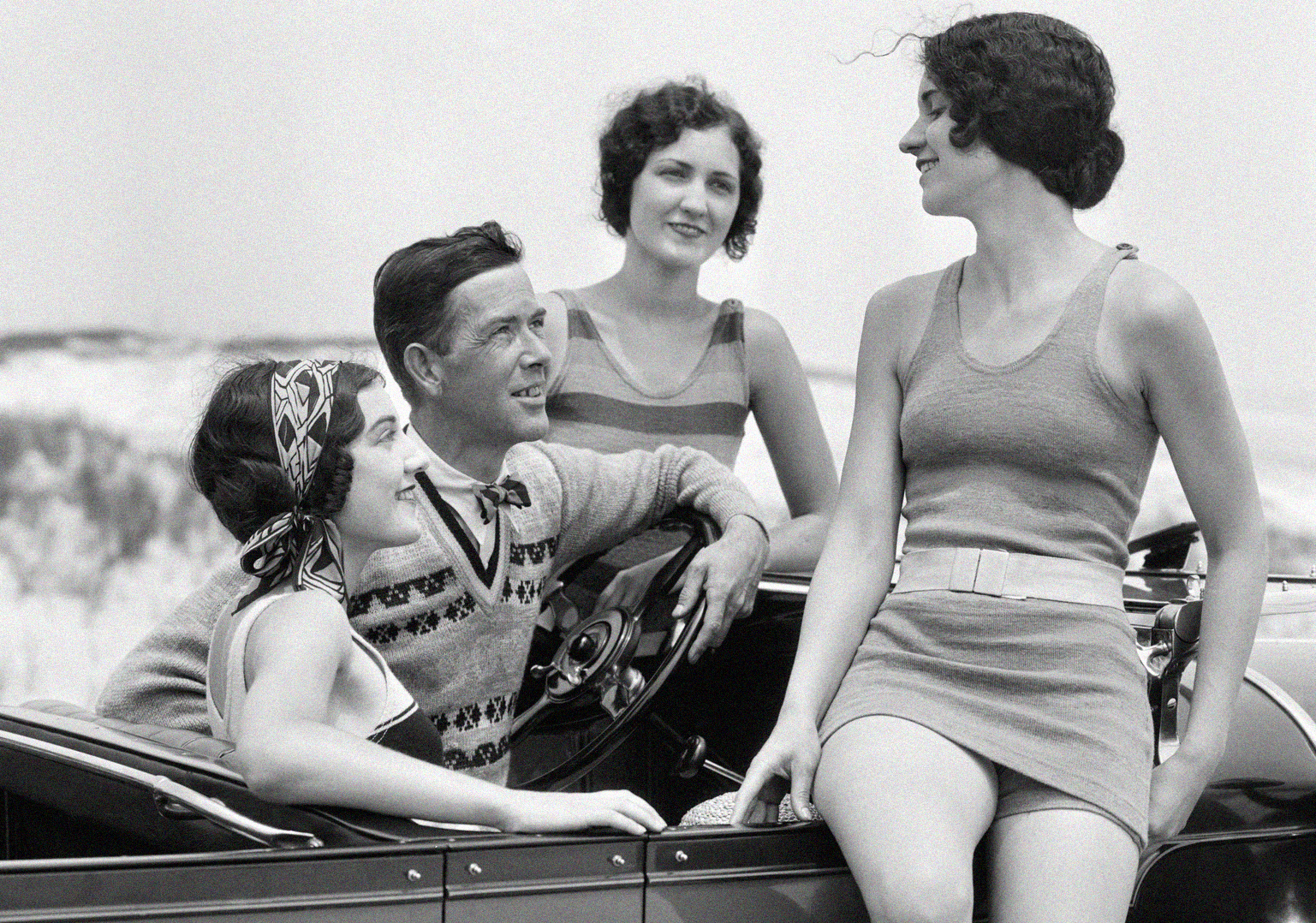
Another invention that shaped teen culture was high school. Most states had very lax compulsory schooling laws, especially since children would have to drop out to help their parents financially. However, with a better economy, states could extend schooling years and set aside an entirely new schooling system. Nowadays, only seven states allow students to drop out before 18 without parental permission. Now that these kids — all going through puberty and suffering from an influx of hormones — had one place to interact with each other, this fully formed the new age group known as teenagers.
Ever since the beginning, teenagers were treated with hostility. J. Edgar Hoover published an FBI report in 1953, stating that “the nation can expect an appalling increase in the number of crimes that will be committed by teenagers in the years ahead,” showing that teenagers were never given a chance to be themselves without criticism. However, while both sexes were under this “dangerous” umbrella, teen boys were let off the hook a lot more than teen girls. While teen boys were seen as rambunctious, teen girls were seen as crazy and accused of tearing apart traditional family values.
The Flapper Era
Even though the word “teenager” still wasn’t popular during this time, flappers — young women characterized by bob haircuts and short dresses — allowed young women to stand out as a separate age group. Teen girls used this style to combat societal norms of what it meant to be a girl and/or woman at the time: demure, modest, submissive, etc. These teen girls fought for independence from men and to be considered their own people. Evidently, they succeeded since society still remembers them all these years in the future.
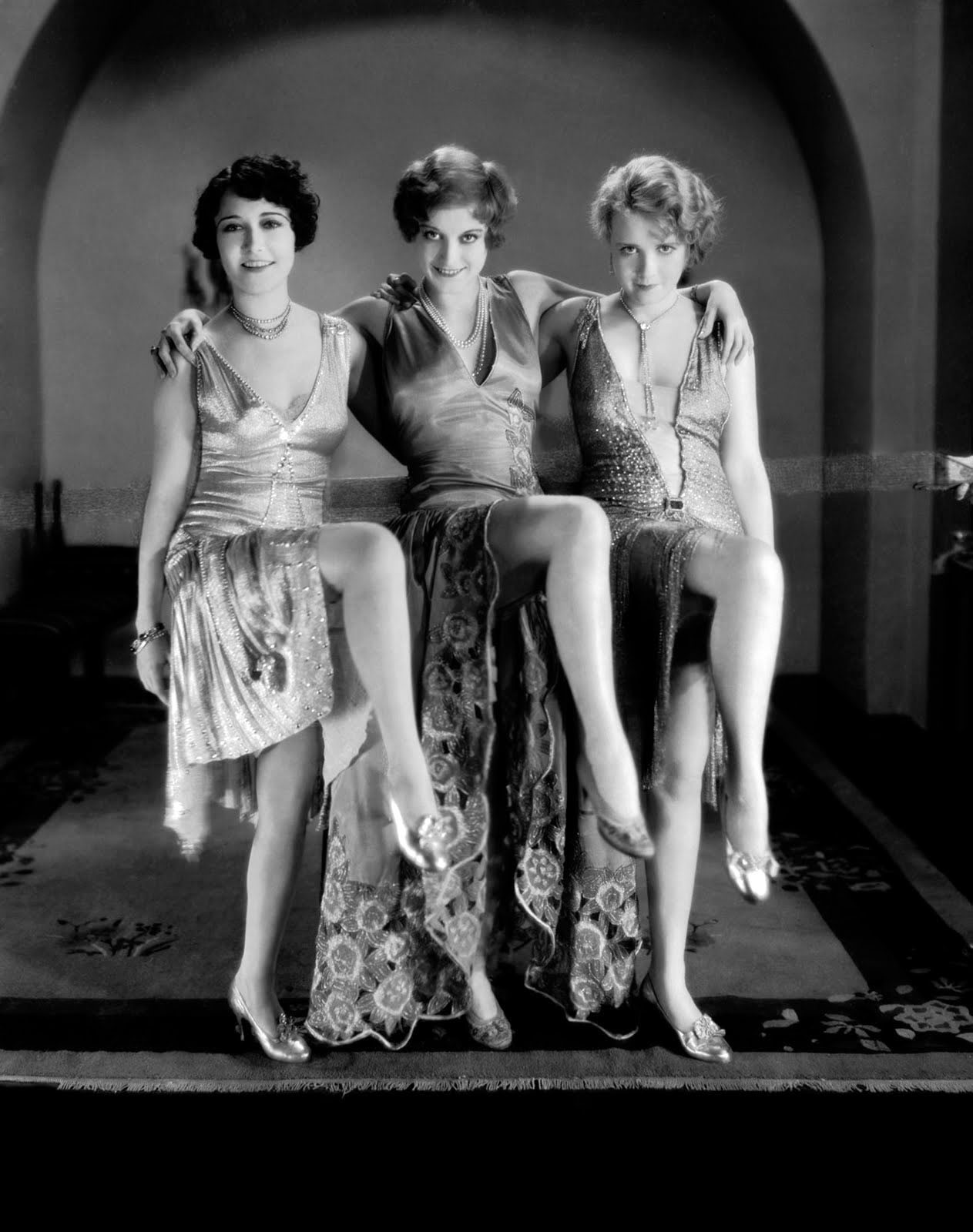
This phenomenon is one of the first historical examples of teen girls and young women asserting themselves in society to make a name for themselves and actually live life instead of living in the shadow of men. Flappers were considered outrageous and immoral, and these women encountered their fair share of discrimination. However, now that society has evolved, people are now wearing even shorter costumes than flapper outfits were in the 1920s. Teen girls have been creating spheres for their existence for hundreds of years, and flappers are one example of this.
Sinatramania
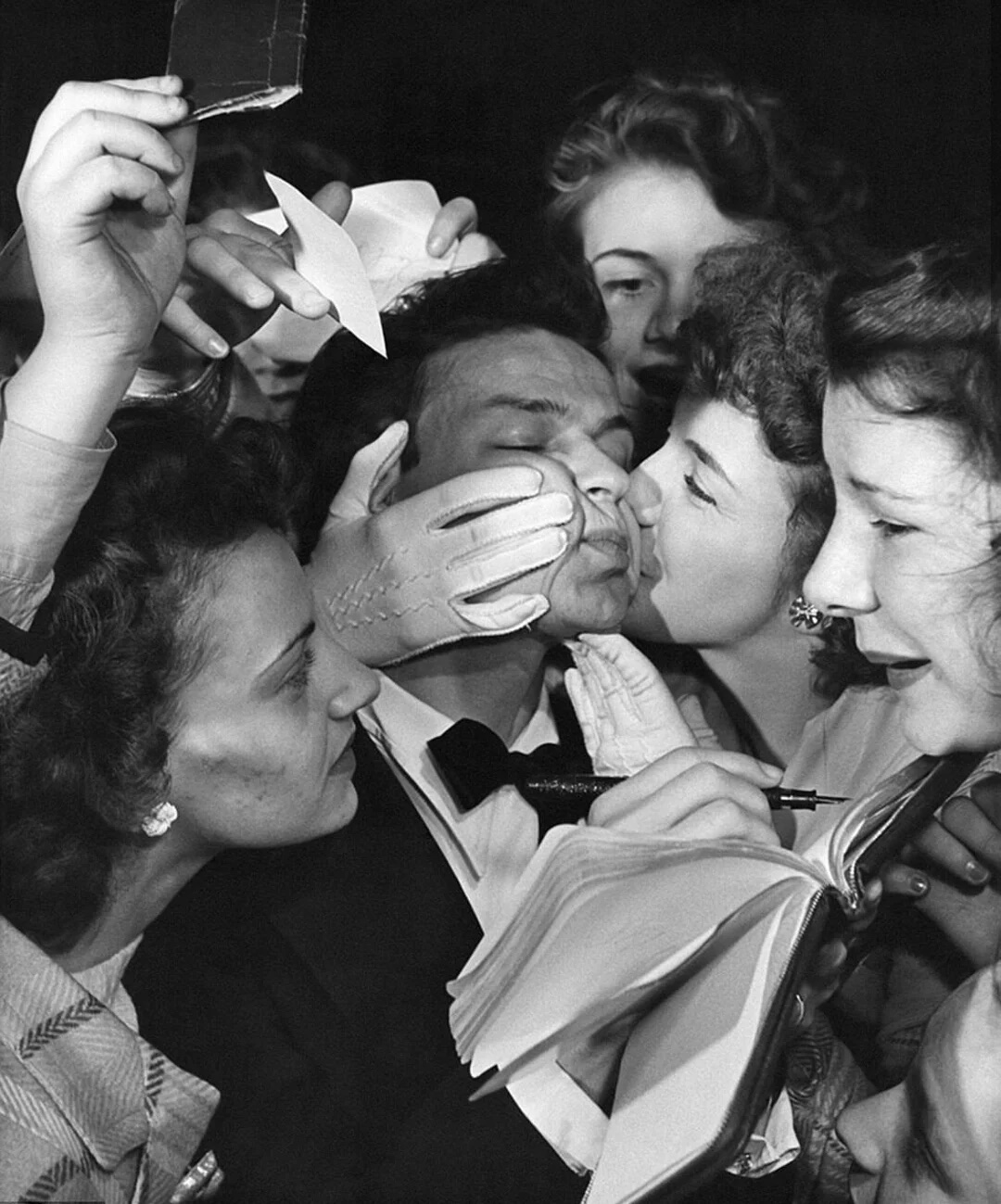
Sintramania — after the musician Frank Sinatra — in the 1940s were perhaps one of the first displays of teen girls becoming unhinged as a group and exerting their buying power. Frank Sinatra, due to his good looks and charisma, appealed to teen girls. They attended his concerts and public appearances in droves. They would cause such a commotion and scream so loudly at his performances that people thought the building would cave in. They also had a fandom name: the “bobby soxers.”
They even caused a riot (known as the Columbus Day Riot) in 1944 when only 250 people were allowed into the venue, leaving almost 35,000 adoring fans outside, desperately wanting to go in. Frank Sinatra is arguably the beginning of the male musician craze of modern times. Because of the societal norms broken by the flappers and the invention of automobiles, teen girls were given freedom like never before, allowing them to go to his performances and have a space separate from their fenced-in communities and overprotective parents where they could be themselves. The 1940s was the beginning of a new phase of teen girl, and it only gets more feverish from there.
“The King Of Rock And Roll”
Elvis Presley is another stepping stone in the history of crazed teen fangirls, but he’s an important one. While Frank Sinatra practically started the era, Presley’s provocative dance moves and sexual lyrics (by the time’s standards) only made it even more socially acceptable for girls to act this way and made them act even more crazed. His effect on pop culture is so great that an entire musical (Bye Bye Birdie (1960)) is based on the upset among teen girls when Presley was drafted into the army in 1957.
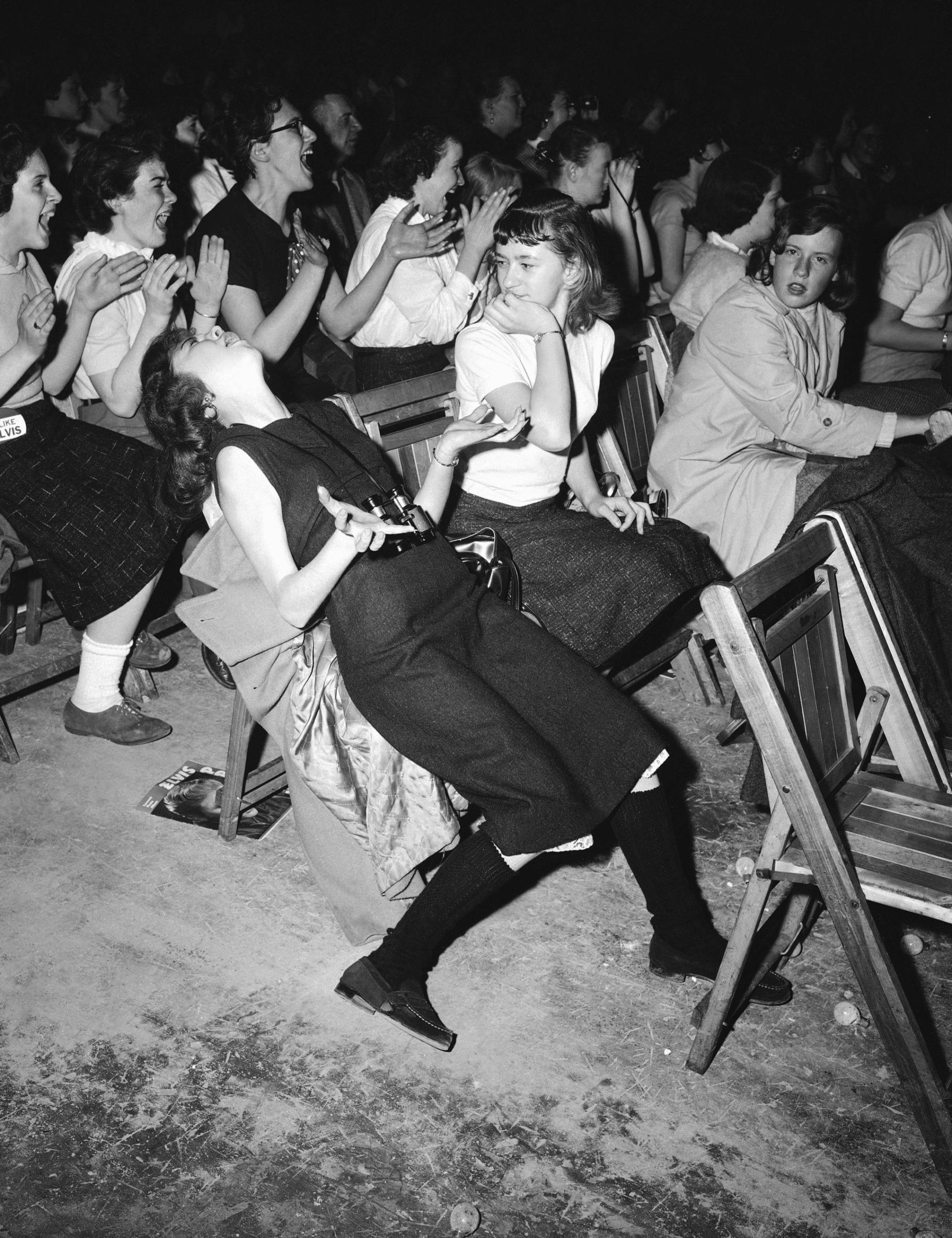
His influence over teen girls was much stronger than Sinatra’s, partially due to the aforementioned sexually suggestive songs and dancing, allowing teen girls to feel more comfortable in their sexuality and express it a lot more dramatically. Instead of just causing a riot, there’d be riots every time he performed, to the point that 50 National Guardsmen were called in to contain the crowds at two shows at the Mississippi-Alabama fair. However, because of this dramatic shift, fangirls who just screamed or casually followed a musician were seen as normal compared to the other crazed, riotous fangirls.
That’s the keyword: normal. Elvis Presley normalized teen girls being fans of something. He normalized girls having fixations on things, especially men, and screaming because they can’t contain themselves. But rather than being seen as social outcasts for idolizing a man and behaving in such an uncouth manner, the behavior was seen as “teen girls will be teen girls.” It was brushed off and seen as endearing rather than reputation-ending. It was seen as cute, if not mildly annoying, by parents and friends. It allowed girls to express and be themselves.
Beatlemania
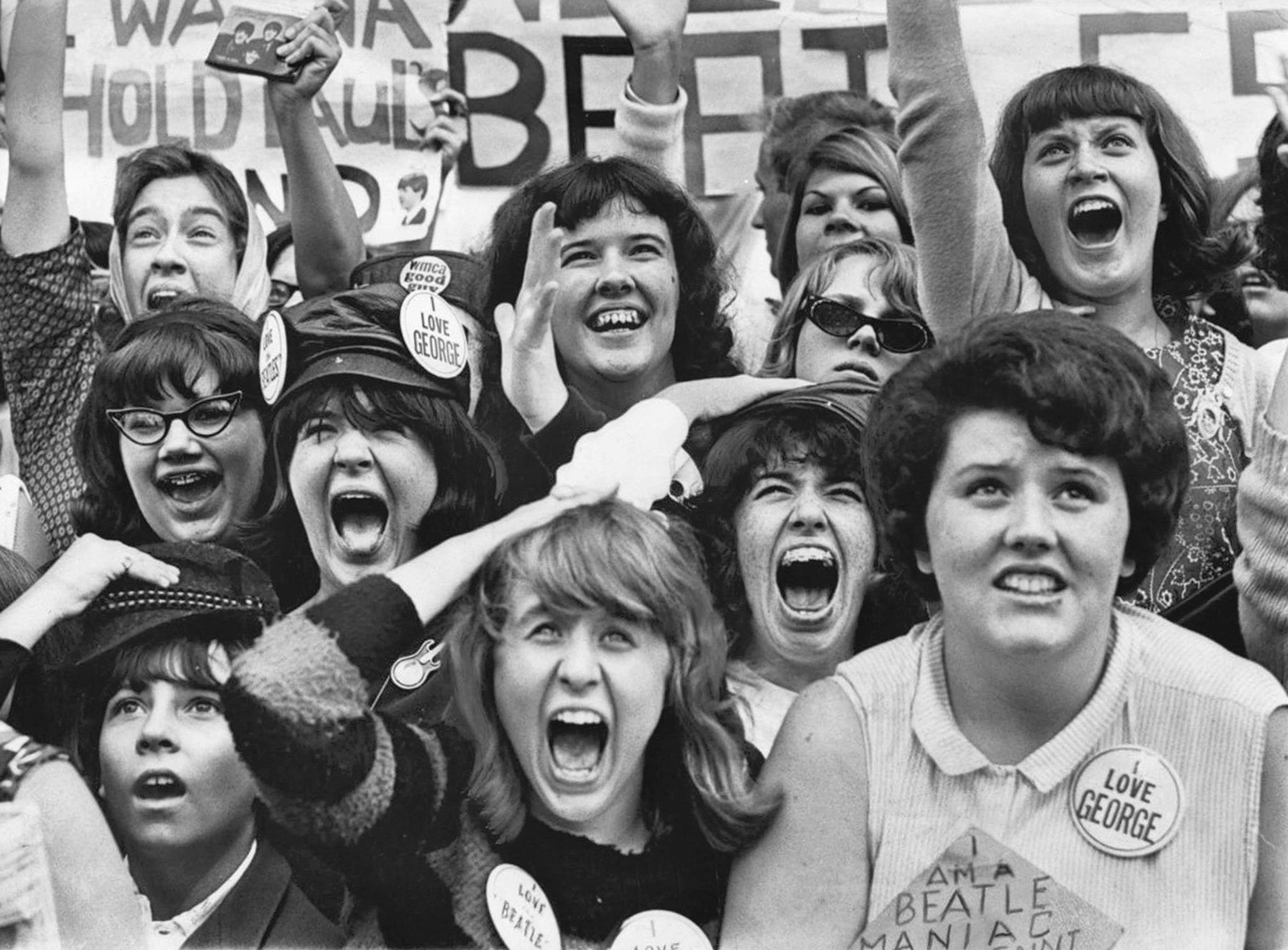
The Beatles created a phenomenon of crazed teen girls like never before. Where Frank Sinatra had Sinatramania, The Beatles had the much more famous Beatlemania, which is still known today for being the most rabid enthusiasm among fans. There was rioting, fainting in the middle of concerts, and screaming so off the charts that The Beatles literally ended live performances after 1966 because they became so frustrated with not being heard over their fans. The adulation and obsession got to the point where people likened Beatlemania to a religion, and concerts became a center for young women to participate in this religious experience with men they openly wanted to have sexual relations with.
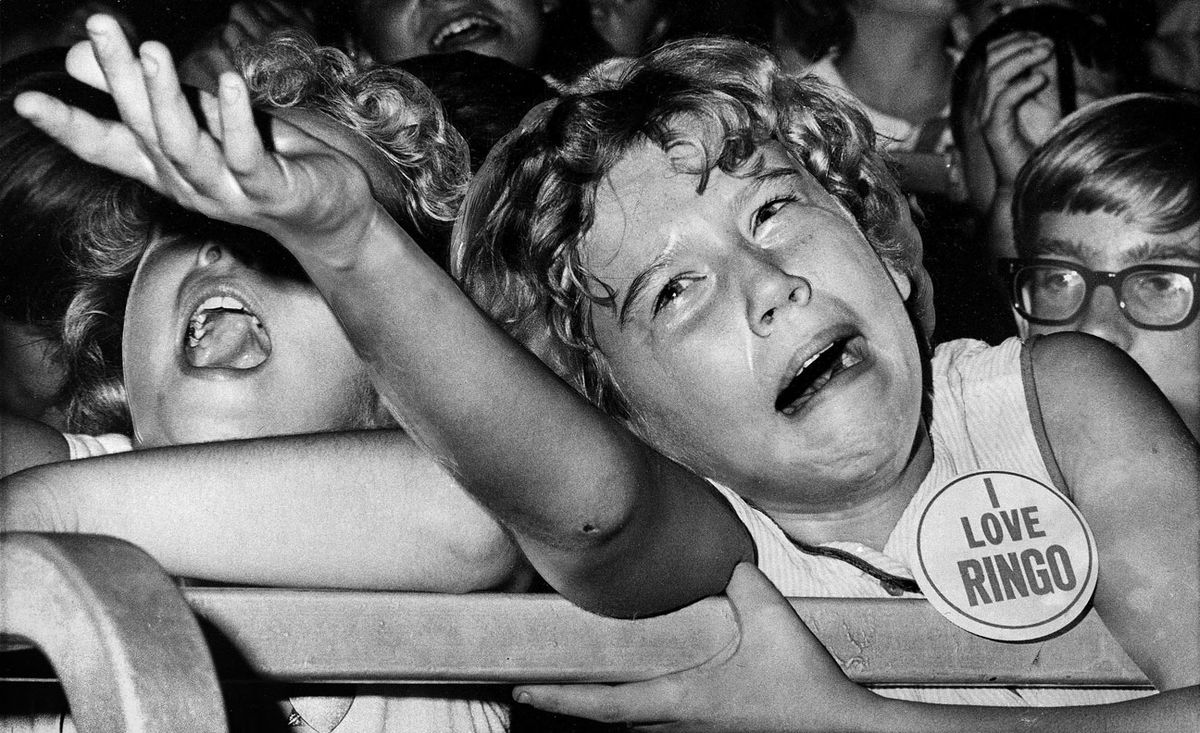
Never before had girls and women been allowed to show their sexuality so openly before, and it became common to say which Beatle they liked the most and comment on their appearance. John Lennon literally pointed out that the band was more popular than Jesus. While this partially led to his assassination and the band’s “cancelation” in the US South, it drew almost no controversy in the UK. Why? Because it was partly true. Christianity was declining, and teen girls found more representation, safety, and comfort in the communities and fandoms built around The Beatles than with religion.
Boy Bands
Beatlemania set up the modern-day concept of boy bands. While this article will discuss how crazed fangirls are over boy bands, no band or fandom has come close to imitating the Beatlemania phenomenon. Even though it had become normalized, these fangirls, deemed “teenyboppers,” were mocked and scorned in the media. Despite the evolution their age group and sex had gone through up until the 1960s, teen girls were still not taken seriously. Sure, certain behaviors had become normalized, but their association with The Beatles brought down the band’s credibility to that of a mere boy band. Any person nowadays in their right mind would never call The Beatles a boy band — in fact, they’re considered the best band of all time.
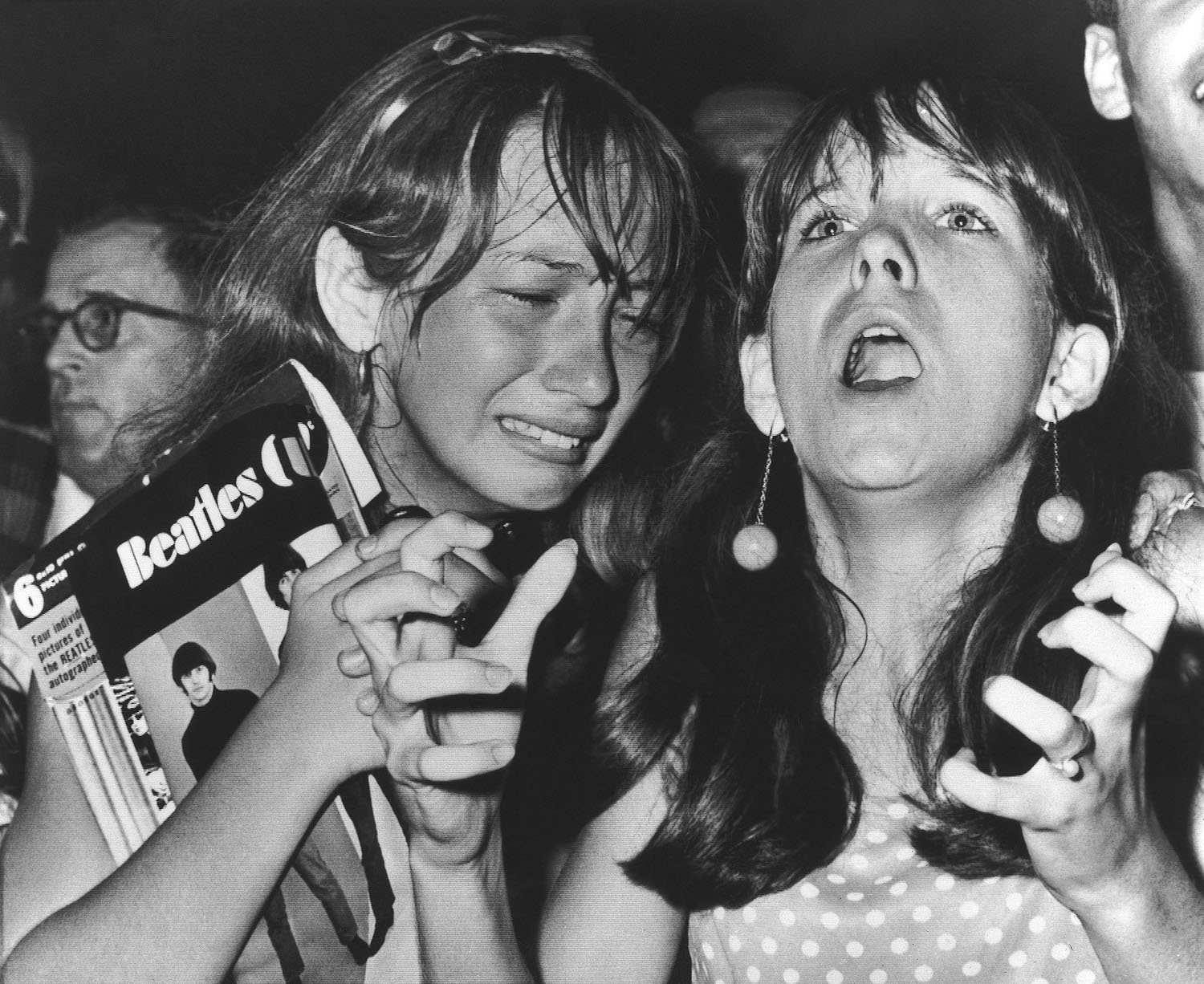
Why? Because their main fanbase is made up of mainly old white men now. Teen girls were one of the main reasons The Beatles rose to fame and became so prosperous, and yet their contributions are completely cut out of history. People sweep them under the rug and pretend The Beatles were always considered classy and the best band ever instead of a pretentious boy band when, frankly, they were considered a menace to society because of their controversial opinions. The Beatles were never always the best band in history, but they gained that label with the help of the same teen girls that have been shunned from their history.
The Teen Girl Craze
So, these teen girls were super crazy, right? Well, not exactly.
What this mania shows is that these teen girls had been so emotionally and sexually repressed their entire lives that the second they were allowed a space where they could be themselves, all their built-up emotions came out in the form of ear-splitting screams and tears. Teen girls are expected to be shy and quiet nowadays, but in the 1940s, the expectation was more of a requirement. If a girl was outspoken about her feelings or sexuality, she was shunned and considered a societal outcast.
Her entire life would be in shambles: nobody would want to marry her because of her reputation, and since communities were much smaller back then, it’d be nearly impossible to outgrow that reputation. It also goes to mention that most, if not all, of these fans were overwhelmingly white. Throughout most of these fangirl phenomena, the US was still highly segregated, and other Western countries like the UK were going through their own racial issues. Nevertheless, these teen girls exerted buying power and had autonomy…only because they or their families could afford it. They were able to see Elvis Presley on The Ed Sullivan Show (1948-1971) because they could afford a TV. Their families could afford to buy cars. Their families could afford to give them higher education.
Being a fangirl came with its own form of mockery and scorn by society and conservative commentators, but at least these teen girls had a space available for them to be themselves. They were allowed to be a person and release all the sexual and emotional repression in their lives. Unfortunately, black teen girls, and other POC girls, most likely never got to experience this. This has changed somewhat over the years, and nowadays, fandoms are much more diverse, but this generational deficit of POC teen girls in fandom continues.
Where We Are Today
Several boy bands and male musicians today have helped solidify the stereotype of the “teen fangirl.” One Direction, Justin Bieber, NSYNC, Big Time Rush, 5SOS…the list goes on. Of course, this doesn’t even include K-pop bands like BTS and EXO, which have their own type of rabid fangirls. But one thing all these musicians and bands have in common is how they are perceived by society just because of their fanbases. Classic rock bands, rappers, country singers, bands and musicians with male-dominated fanbases are taken much more seriously because their fans are male, even though One Direction has won 242 awards and has been nominated for 366 awards. Regardless of how decorated these boy bands are, they are still treated like a joke.
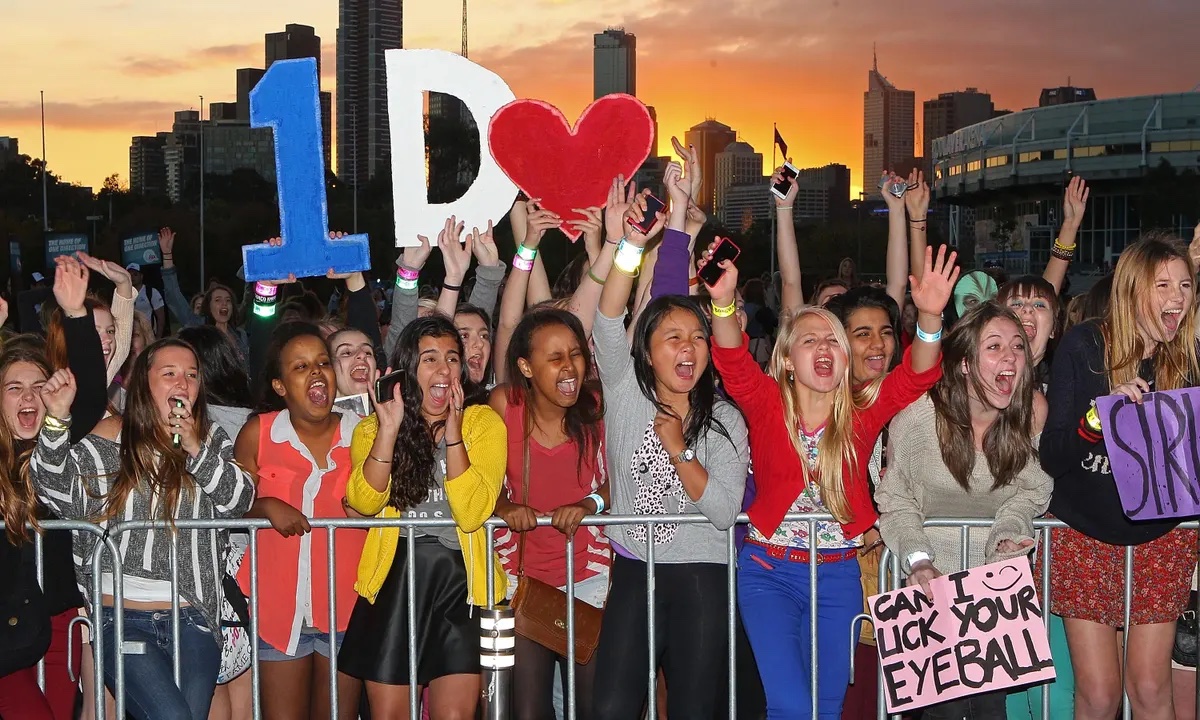
The term “boy band” is used to insult male musicians or bands trying to establish themselves that happen to have big female fanbases. Teen girls are constantly denigrated, even though they provide bands as their main sources of income. They attend all their concerts. They buy all the merch. They provide free advertisements on social media with hashtags like #StreamX or #WeLoveY. These bands would die without their female fanbases, yet people continue to shame these girls…why? Teen boys are allowed to have obsessions.
They love sports and rappers and video games, all of which are very respected if not casually joked about. Yet they riot after their team loses or wins (lovingly dubbed a celebration by the media), causing much more city-wide damage than teen girls ever have. They’re allowed to be emotional and downright violent. But when teen girls scream because they get to see their idol in person, that’s an outrageous and ridiculous display. When they have a poster of their favorite singer on their wall or are wearing their merch, they’re considered just another preteen fangirl. People continue to shame these girls; why? Simple: misogyny. Anything women enjoy is automatically lame and stupid.
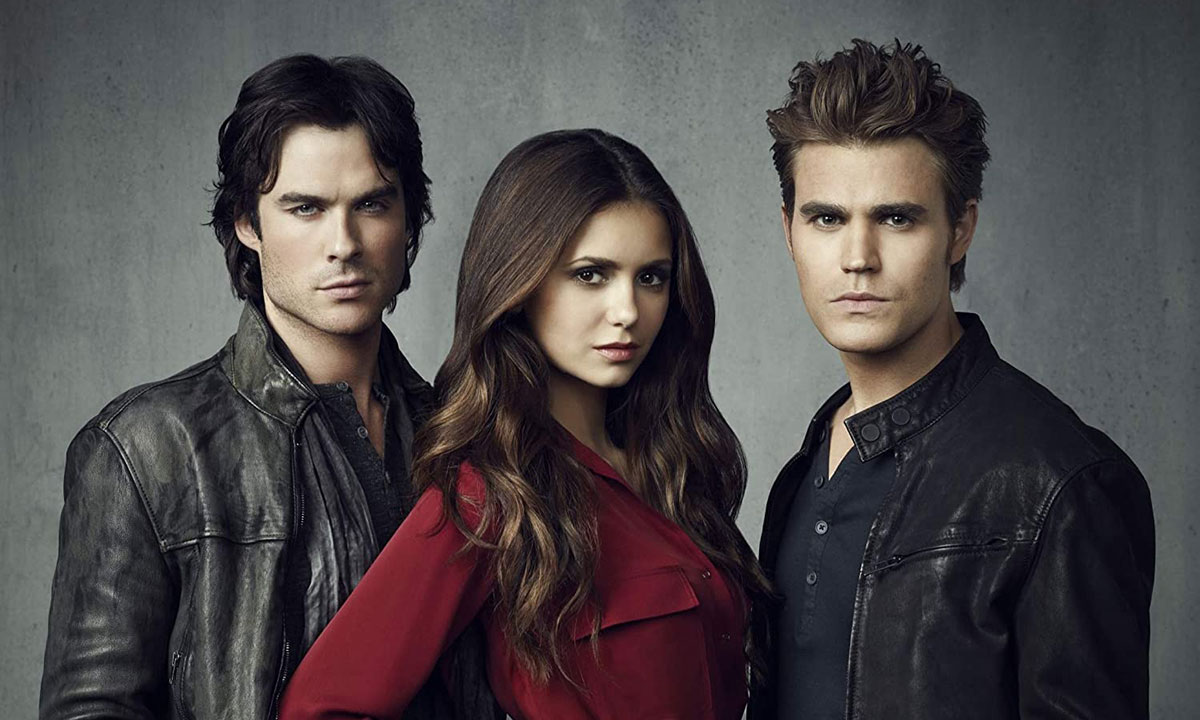
It’s not just music. Any media with a female-dominated fanbase is under scrutiny. Shows like The Vampire Diaries (2009-2017), Gossip Girl (2007-2012), and Teen Wolf (2011-2017) are all made fun of and not taken seriously. Movies like Twilight (2008) may be a little silly and aren’t masterpieces, but they are taken apart and stomped on. Anybody who liked them (again, mostly teen girls) were outcasts and considered weird. Meanwhile, there are male-dominated shows like Rick and Morty (2013-present) and movies like — actually, this article is already going to get enough hate for listing Rick and Morty; there isn’t one movie with a big male fanbase that can be listed that won’t get hate — that are as “bad” if not worse than Twilight but are considered must-know shows and movies just because of their male fanbases. The Vampire Diaries or Twilight fanbases never rioted inside a McDonald’s because they ran out of a certain sauce, and yet they’re considered immature.
No To Sexual Thoughts, Yes To Sexualization
Teen girls are called immature and brainless, as this article has pointed out, yet they are the beauty standard. The younger, the better. Teen girls are sexualized to oblivion in media, portrayed as both dumb and seductive. In fact, those two traits go hand in hand — the more naive and innocent she is, the sexier she’s marketed to the audience. Shows like Riverdale (2017-present) are the biggest offenders. Riverdale‘s cast consists of mid-twenty to early thirty-year-olds portraying juniors and seniors in high school having graphic sex, wearing extremely revealing clothes, and literally pole-dancing, all as minors.
Scenes with teen sex or sexuality can be done tastefully, as seen with Sex Education (2019-present) and Eighth Grade (2018), both of which aim to show preteen and teen audiences what healthy sexual relationships look like. They come with life lessons and a moral to the story; Riverdale is just needless sexualization of teen girls since they’re considered sexier in society because of how easy they are to manipulate by older men.
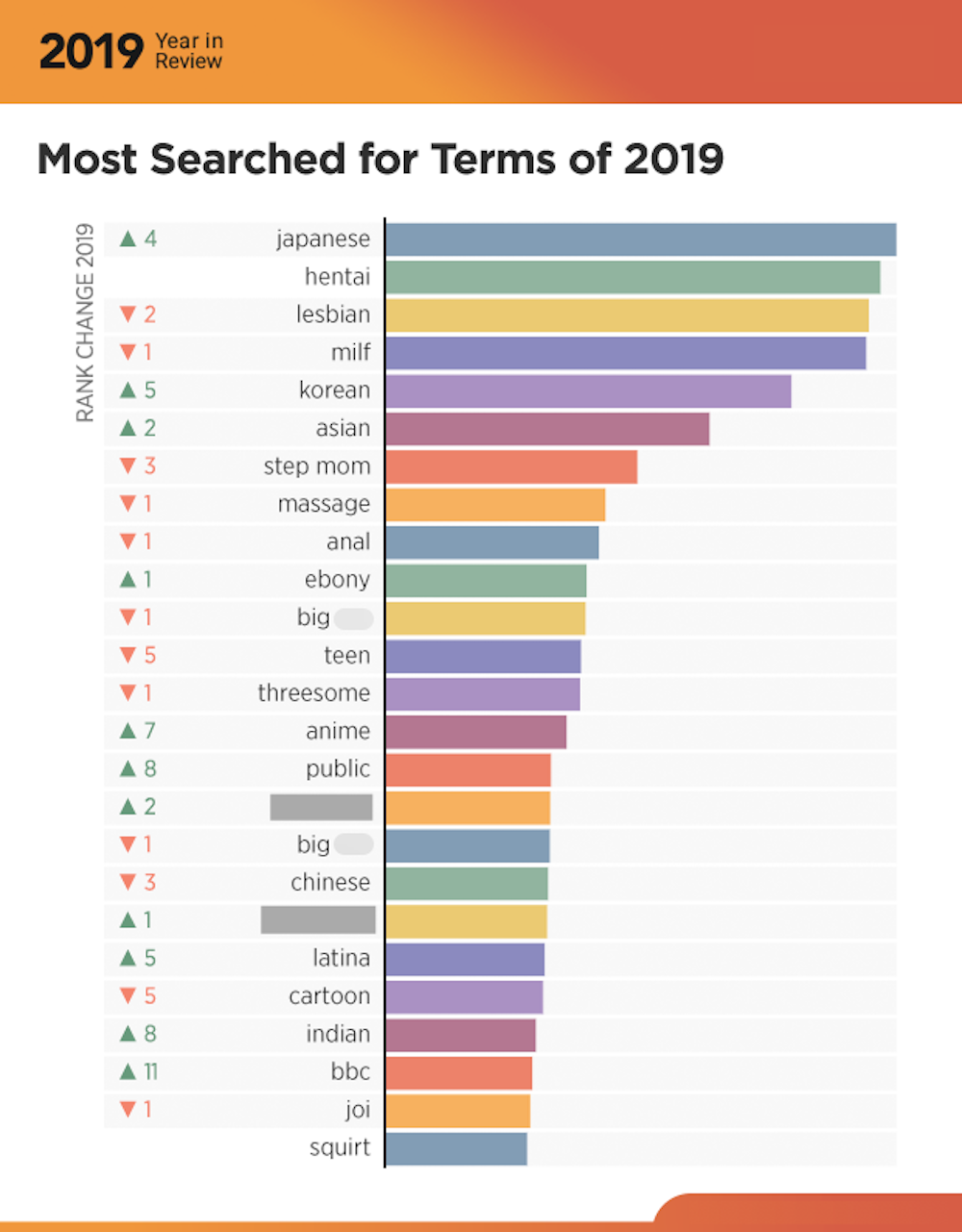
This is not even to mention the porn industry, where teen was the 12th most searched term in 2019, which is the first time it dropped out of the top ten. It’s posited that the reason for that isn’t because men are suddenly dropping their pedophilic tendencies, but rather, teen has become a ubiquitous term rather than a specific one. It’s expected that the models in other search terms, like lesbian or Japanese, border on prepubescent.
Phrases like “barely legal” or “just turned 18” are all used with one thing in mind: teen girls are sexual, and the younger they are, the better. Imagine a father telling his preteen daughter that she’s too young to be obsessing over these men. Then, he goes into his office to watch teen porn, where the girl is marketed to look just like his daughter. This is the juxtaposition that teen girls go through in our society. They are too young to take control of their sexuality through their favorite celebrities or shows, but they’re the perfect age to be sexualized.
Teen Girl Power
Teen girls are treated as brainless and like they can’t make decisions for themselves; however, that couldn’t be further from the truth. Of course, they are still young in terms of worldly wisdom, but they know more about marketing, social media algorithms, and show business more than some people who actually work in those fields. They know exactly how to manipulate the algorithm to boost their videos advertising their favorite singer or actor and boost hashtags to raise awareness about a newly released song or episode. In addition, they are able to (and often do) write a biography on their favorite character or celebrity.
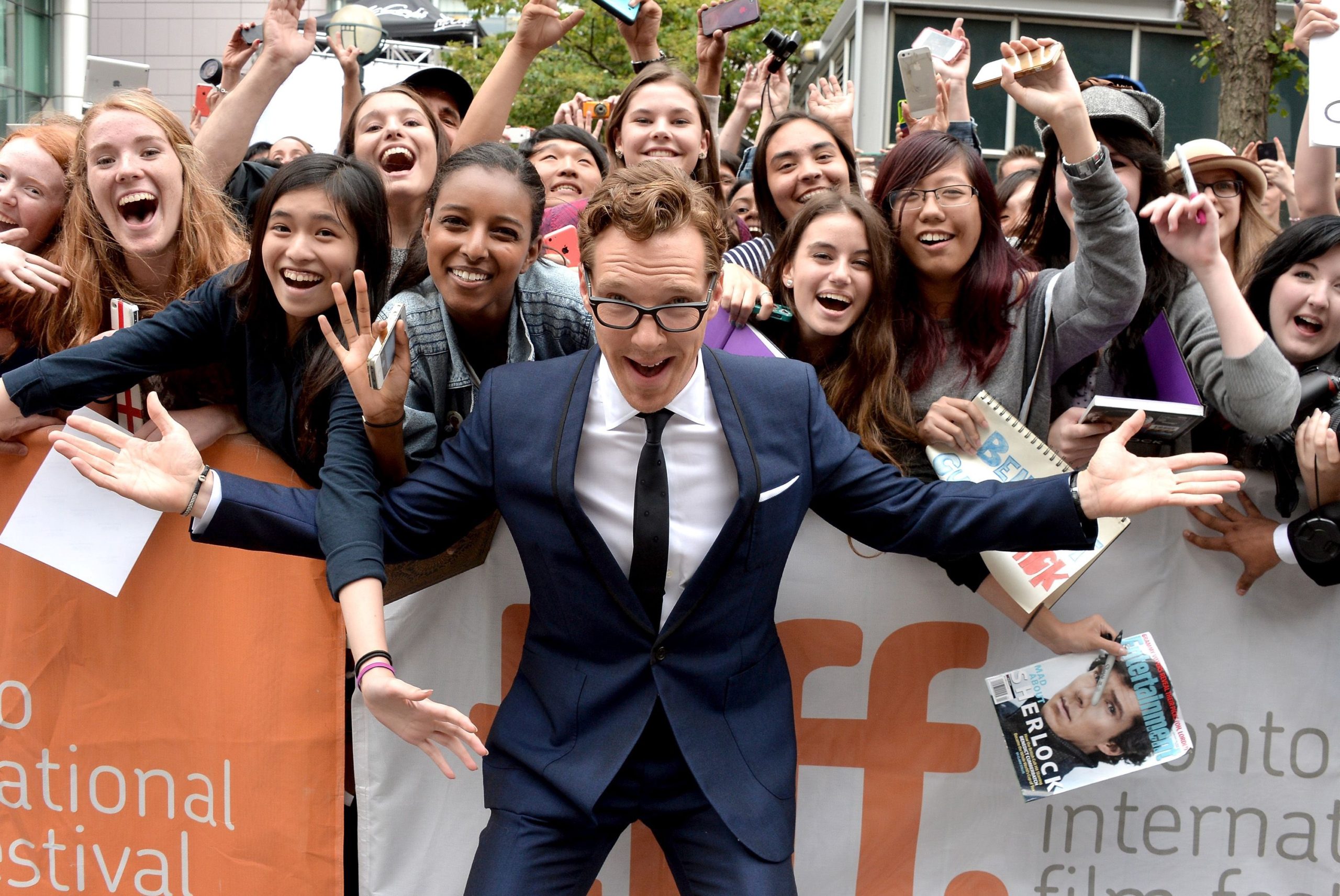
Fangirls have been behind the biggest forms of unpaid fan labor for a century, starting with the Sherlock Holmes anthology. They wrote fanfiction when Arthur Conan Doyle killed Sherlock off, bringing him back to life. They published fanzines, wrote fanfiction, and drew fanart for Star Trek (1966-1969) and other science fiction shows in the 1960s when only critical analyses and debates were taken seriously as a form of fan labor (and these discussions were male-dominated — go figure). This is an ongoing trend, even today. Teen girls produce the biggest form of unpaid fan labor through advertising, promoting on social media, buying merch, and talking about it to everybody in their lives, yet they are still seen as stupid.
Teen girls also are masters of merch. Nobody buys merch like fangirls. Shirts, keychains, cosplay, phone cases…from Etsy to Redbubble to individual artists’ sites, fangirls are the biggest financial supporters of media and small businesses. They use their allowances or their job money and spend it on things to support their favorite fandoms and artists. They quite literally stimulate the economy, but — once again — they are forgotten and made fun of.
What We Can Do
Teen girls deserve better. For over a century — ever since the concept of teen girls became a thing — they were seen as the enemy. From the very beginning, teen girls were never given a chance to just… be. Instead, they have constantly been the butt of the joke, and now, with the popularization of TikTok and other social media platforms, grown men have taken to putting on wigs and mocking teen girls’ mannerisms and interests. Before that, comedians loved to make fun of their teen daughters and their “horrible female hormones.”
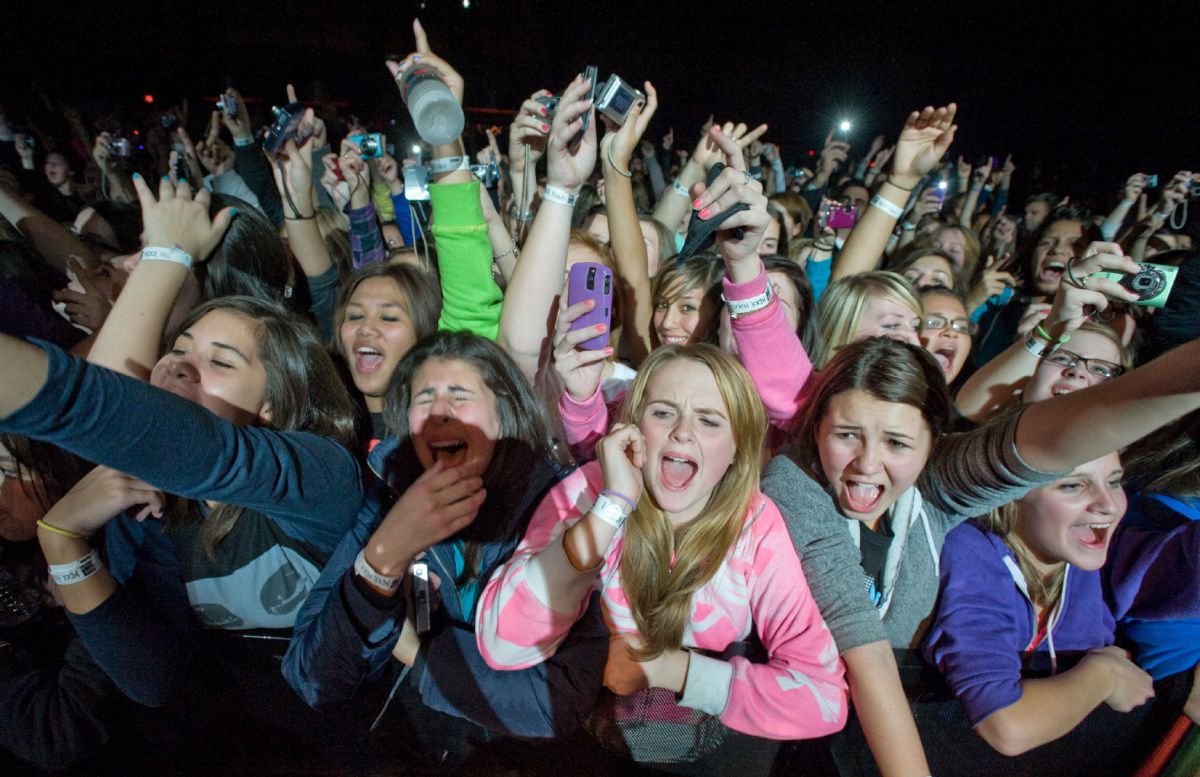
What society needs to do now is give teen girls respect. Allow them to express themselves however they want. Allow them to have spaces outside of school and their families. Allow them to scream to their heart’s content; give them the same exceptions that we do to “spirited young men” who overturn cars and break windows and turn cities upside down because their team lost. Teen girls should be allowed to be weird. They should be allowed to be “cringey.” But, with the ever-disappearing preteen era, we should let them hang onto their fixations before they’re thrown into the horrible world of adulthood.
Let teen girls be passionate. Let them be kids for just a little longer without shame and mockery. Society owes them that much for everything they’ve provided to the world.
